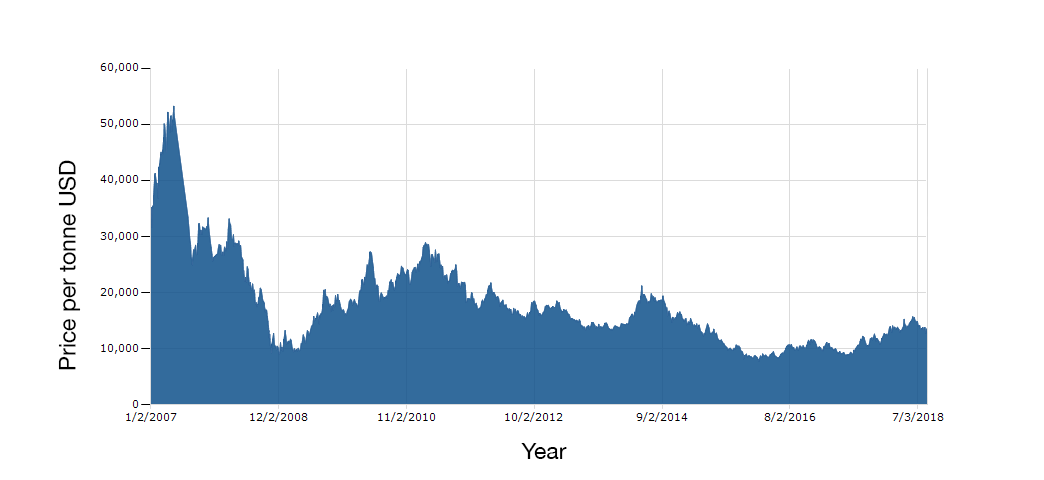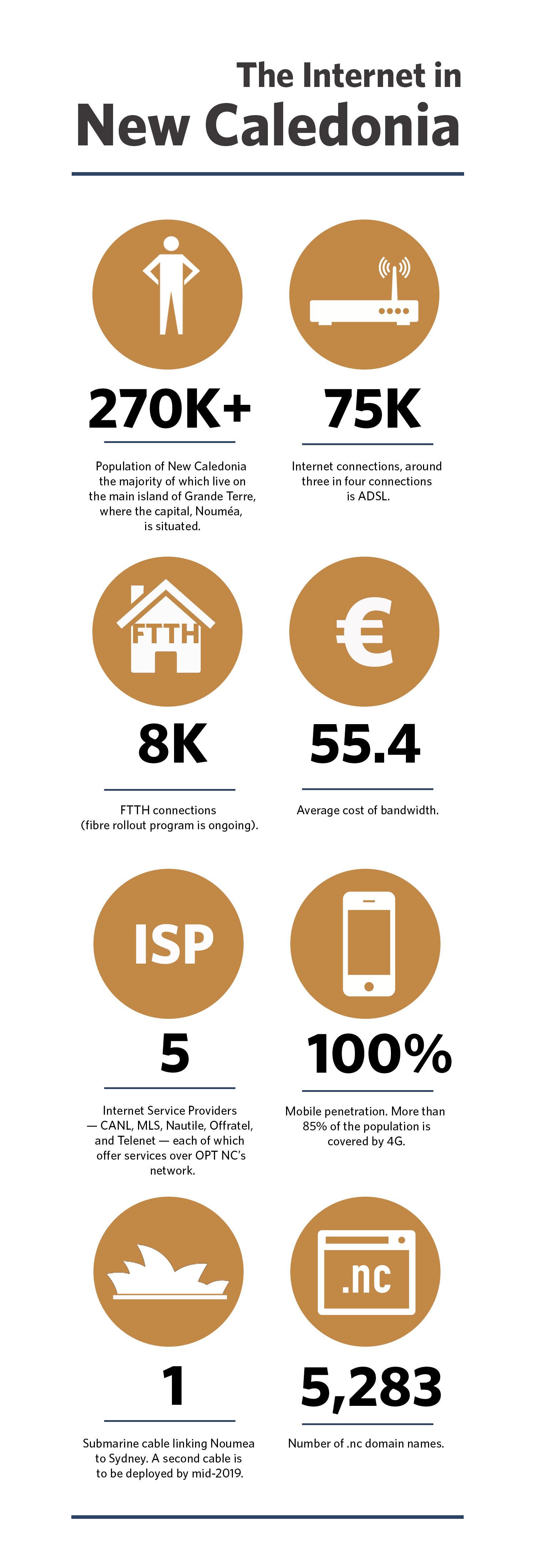
In less than a week, the APNIC 46 conference will be held in Nouméa, New Caledonia. To give you a brief overview of the local history, challenges and opportunities the Internet provides to our host economy and its Pacific neighbours, we’re telling the stories of some of its local champions.
Read the IDSeries, NZSeries, LKSeries, VNSeries, TWSeries and NPSeries from past conferences.
What’s the first thing that comes to mind when you hear ‘New Caledonia’?
Sunny beaches lined with palm and pine trees? Maybe delicious French Pacific cuisine? Or crystal-clear lagoons rich in biodiversity? What about nickel? Yes, that key component of electrical connections and rechargeable batteries including many mobile phones, possibly the one you’re reading this article on?
Thanks to its rich nickel ore reserves — estimated to be between 10-25% of the world’s deposits — New Caledonia has become one of the largest economies in the South Pacific, with a GDP of just over US$11 billion in 2017, three quarters of which is derived from mineral products and alloys.
This is a double-edged sword, however. New Caledonia’s economy is tied to the world’s demand for the resource, which in the past ten years has reduced by almost three quarters in price.

Figure 1 — In 2007 a tonne of nickel was worth more than USD$51,000, compared to less than $10,000 in 2017 (Market Insider).
Against this backdrop, tourism, agriculture and fisheries have grown, diversifying the economy. So too has the ICT sector, thanks by in large to the economy’s extensive mobile and fixed line Internet infrastructure and the government’s digital strategy.
With regards to infrastructure, the incumbent — and host of APNIC 46 — Office des Postes et Télécommunications de Nouvelle-Calédonie (OPT-NC), has played a leading role in connecting the economy’s first submarine cable in 2008, rolling out 3G (2011) and 4G (2015) connectivity, as well as the original backbone and updated fibre to the home (FTTH) network.
Like most Pacific economies, mobile is the most popular means to connect to the Internet, although fixed connectivity is growing in popularity as FTTH is rolled to all New Caledonia’s habitable islands. This, and the connection of a second submarine cable in 2019, is expected to significantly increase Internet speeds to be on par with some of Asia Pacific’s fastest.
The government’s CFP8 billion (USD88.7 million) Strategic Plan for the Digital Economy (PSEN) maximizes these developments and responds to the challenges and opportunities new technologies bring.
“Digital plays an essential role as a support for an alternative model of development of New Caledonia in several sectors (economy, culture, health, education, modernization of the administration, control of public expenditures), while ensuring not to leave part of the population on the roadside.”
A key goal of the plan is to combat the ‘digital divide’ in the Pacific economy. Among the 33 separate action plans falling under the remit of the PSEN is a scheme to install public wireless access points in Nouméa, as a precursor to rolling out connectivity to selected parts of the North Province, South Province and Loyalty Islands Province.
Add to this an export support policy aimed at breaking down trade barriers and developing more competitive industries outside the nickel sector, New Caledonia is positioning itself as a digital start-up hub for the future.
The views expressed by the authors of this blog are their own and do not necessarily reflect the views of APNIC. Please note a Code of Conduct applies to this blog.


